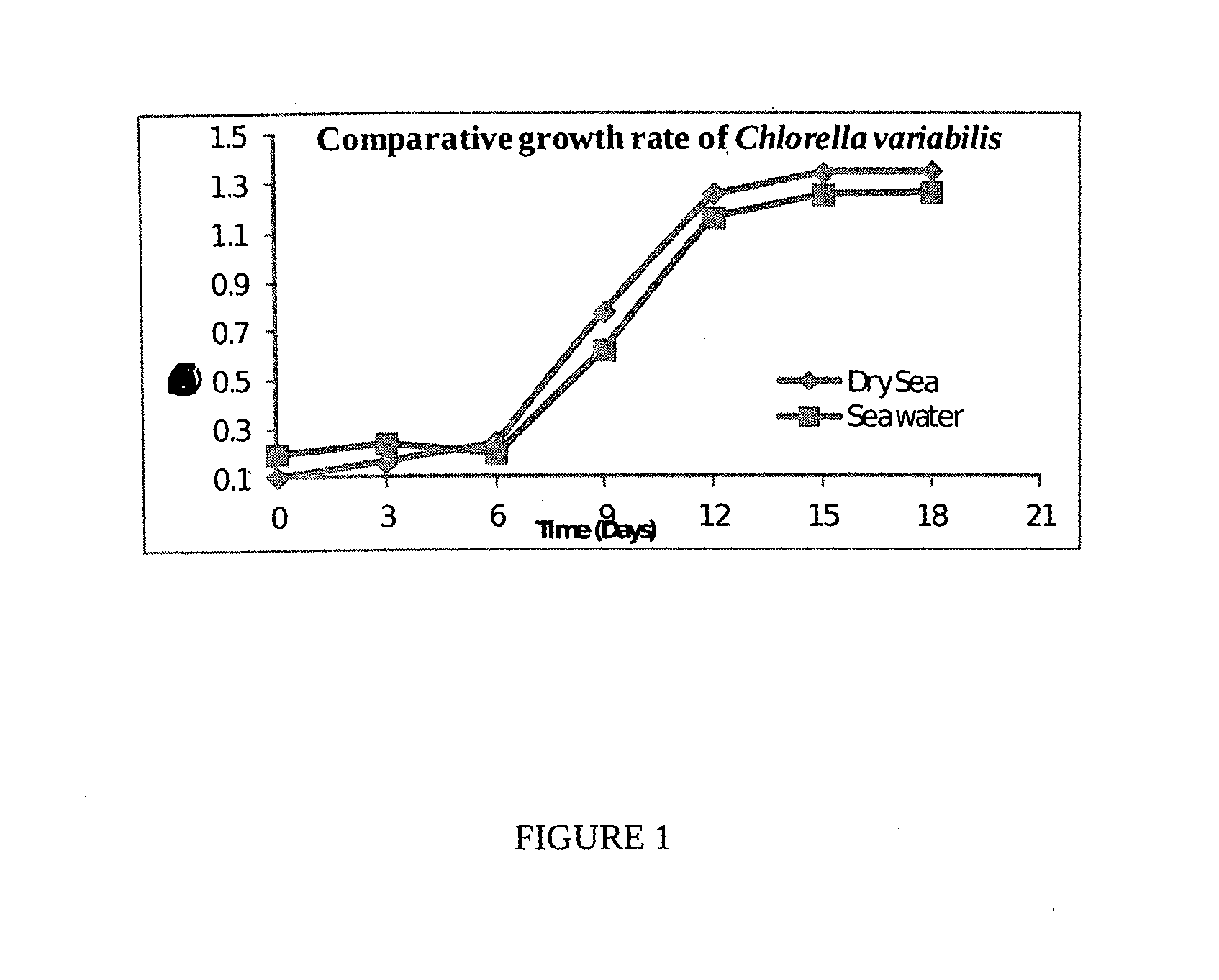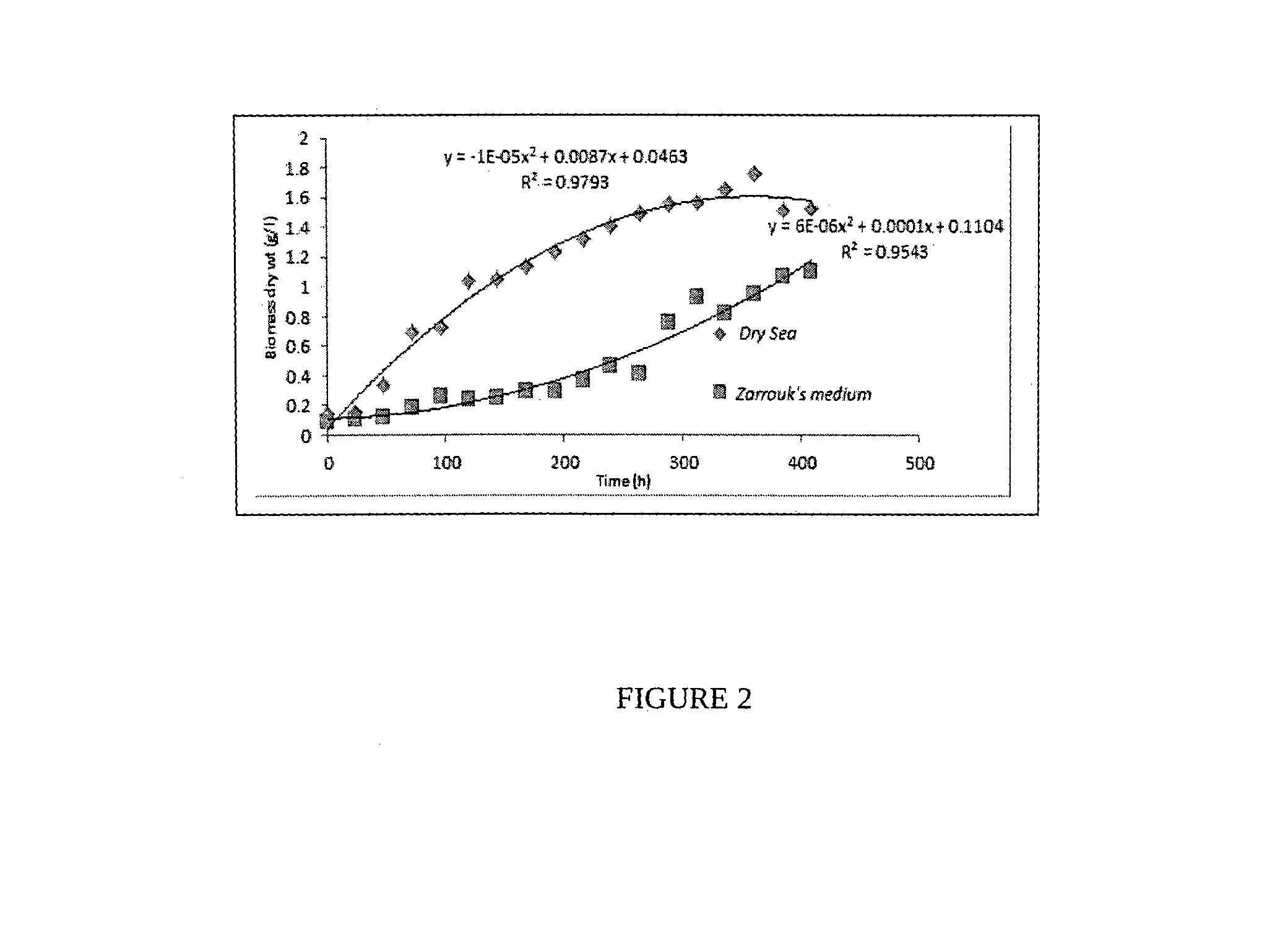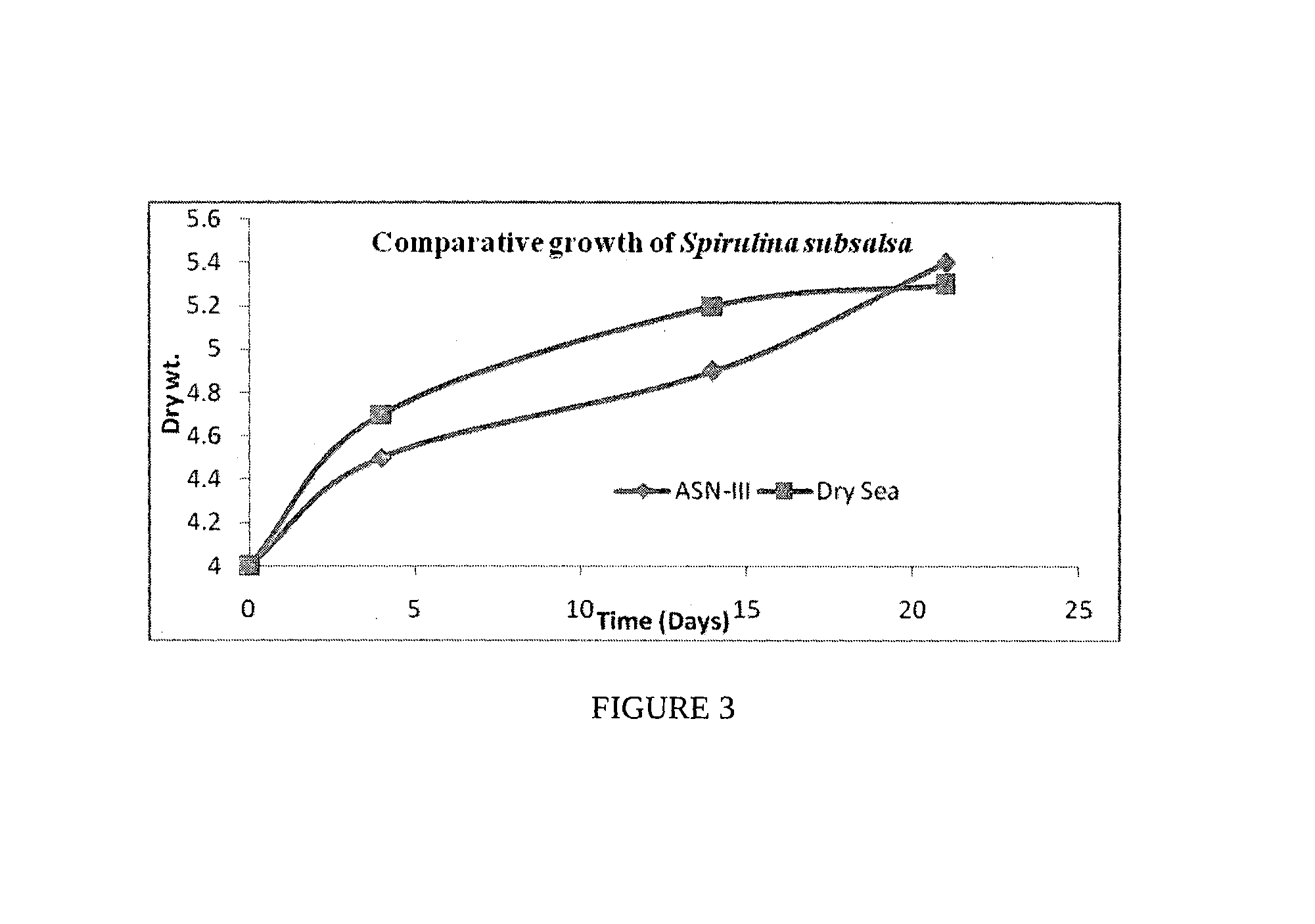Process for the preparation of natural salt formulations for seawater substitution, mineral fortification
- Summary
- Abstract
- Description
- Claims
- Application Information
AI Technical Summary
Benefits of technology
Problems solved by technology
Method used
Image
Examples
example 1
[0089]10 cu. M. of Seawater (7.2° Bé) having the composition Ca2+=0.1% (w / v), Mg2+=0.27% (w / v) Na+=2.3% (w / v), SO42−=0.54% (w / v), Cl−=4.1% (w / v), K+=0.08% (w / v) was transferred to two pans having identical size of 12 M.×2 M.×0.23 M each. The pans were lined with 250 micron LDPE sheet. The seawater was subjected to solar evaporation up to 25° Bé.[0090]a. At 25° Bé 48 kg of salts having composition Ca2+=20.02% (w / w), Mg2+=0.37% (w / w) Na+=1.1% (w / w), SO42−=52.27% (w / w), Cl−=2.97% (w / w), K=traces was separated a Fraction—I.[0091]b. The saturated brine of 25° Bé was transferred to another Pan of same size lined with LDPE sheet and subjected to solar evaporation till 28.5° Bé. 545 kg of salt having the composition Ca2+=0.1% (w / w), Mg2++=0.35% (w / w), Na+=38.6% (w / w), SO42−=0.62% (w / w), Cl−=59.3% (w / w), K+=traces was crystallized in the second pan and was collected as Fraction—II.[0092]c. The mother liquor having a density of 28.5° Bé was transferred to a third solar Pan of same size and mi...
example 2
[0093]5 cu. M. of Seawater of 2.9° Bé density having Ca2++=0.03% (w / v), Mg2++=0.11% (w / v), Na+=0.88% (w / v), K+=0.03% (w / v), SO42−=0.22% (w / v) and Cl−=1.58% (w / v), was transferred to 12 M.×2 M×0.23 M size solar pan lined with 250 micron LDPE sheet and allowed to evaporate upto 25° Bé.[0094]a. At 25° Bé, 6 kg of salts having composition Ca2+=21.0% (w / w), Mg2+=0.08% (w / w), Na+=1.1% (w / w), SO42−=52.5% (w / w), Cl−=2.8% (w / w), K+=traces was harvested as Fraction—I.[0095]b. This saturated brine (25° Bé) transferred another Pan of same size (12 M.×2 M.×0.23 M.) lined with LDPE sheet. The saturated sea brine of 25° Bé was allowed to evaporate till 28.5° Bé and 110 kg of salt having composition Ca2+=0.18% (w / w), Mg2+=0.37% (w / w), Na++=38.6% (w / w), SO42−=0.62% (w / w), Cl−=59.3% (w / w), K+=traces was obtained as Fraction—II.[0096]c. The sea bittern of 28.5° Bé density left after the separation of fraction II was transferred to another solar pan of same size and allowed for complete evaporation. 35...
example 3
[0098]5 cu. M. of Seawater of 4.22° Bé density having Ca2++=0.05% (w / v), Mg2+=0.15% (w / v), Na+=1.3% (w / v), SO42−=0.3% (w / v), Cl−=2.35% (w / v), K+=0.047% (w / v) was transferred to 12 M.×2 M.×0.23 M Size Pan duly lined with 250 micron LDPE sheet.[0099]a. The seawater was allowed to evaporate upto 25° Bé. 11 kg of salts having composition Ca2−=21.9% (w / w), Mg2+=0.08% (w / w), Na+=1.1% (w / w), SO42−=51.5% (w / w), Cl−=2.89% (w / w), K+=traces was harvested as Fraction—I.[0100]b. This saturated brine (25° Bé) transferred another Pan of same size (12 M.×2 M.×0.23 M.) lined with LDPE sheet. The saturated sea brine of 25° Bé allowed for evaporation till 28.5° Bé. The bittern having density of 28.5° Bé was transferred to previous Pan and 160 kg of salt having composition Ca2+=0.15% (w / w), Mg2+=0.37% (w / w), Na+=38.6% (w / w), SO42−=0.62% (w / w), Cl−=59.3% (w / w), K+=traces was obtained as Fraction—II.[0101]c. The sea bittern (28.5° Bé density) was transferred in another pan and allowed for complete evapor...
PUM
 Login to View More
Login to View More Abstract
Description
Claims
Application Information
 Login to View More
Login to View More - R&D
- Intellectual Property
- Life Sciences
- Materials
- Tech Scout
- Unparalleled Data Quality
- Higher Quality Content
- 60% Fewer Hallucinations
Browse by: Latest US Patents, China's latest patents, Technical Efficacy Thesaurus, Application Domain, Technology Topic, Popular Technical Reports.
© 2025 PatSnap. All rights reserved.Legal|Privacy policy|Modern Slavery Act Transparency Statement|Sitemap|About US| Contact US: help@patsnap.com



